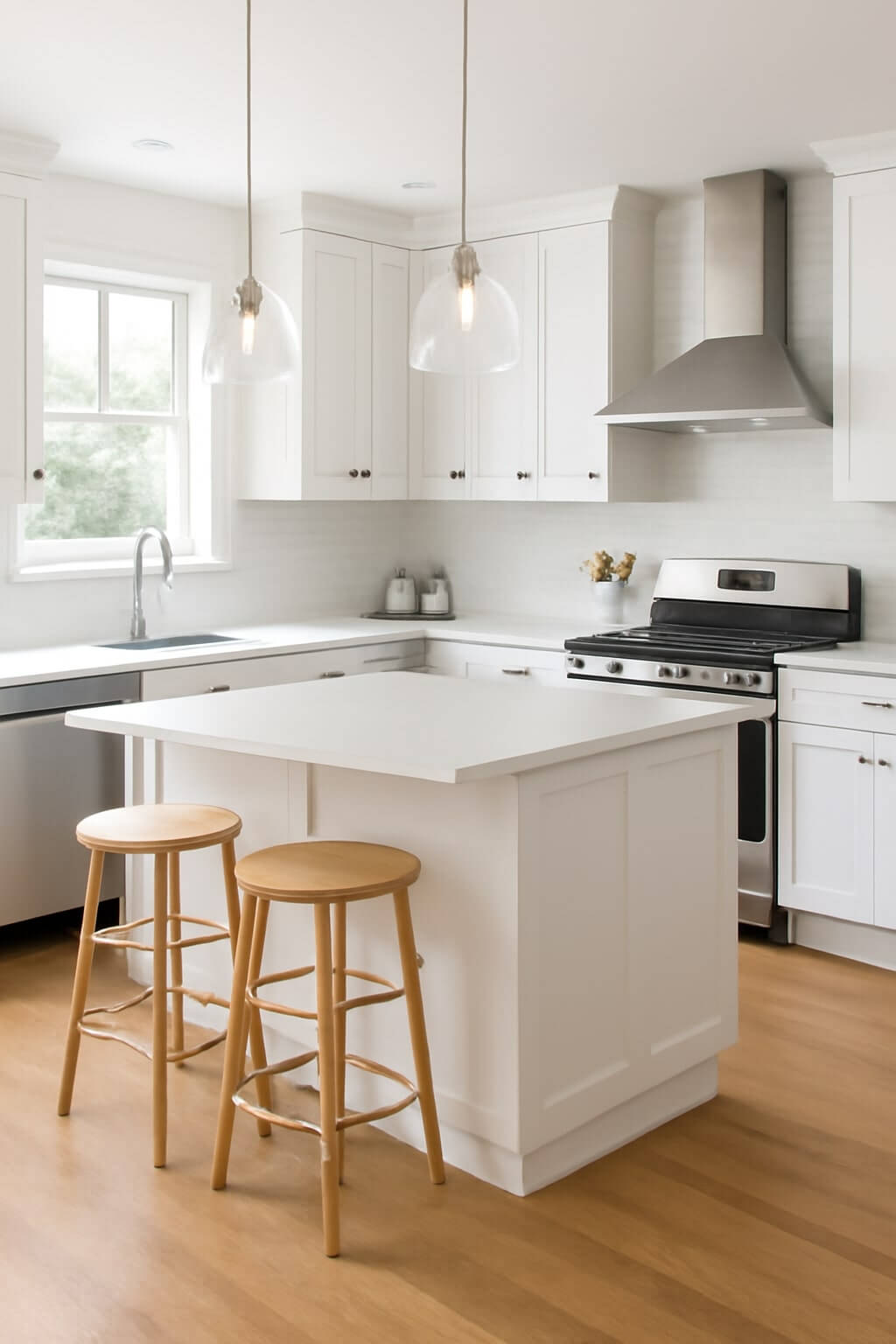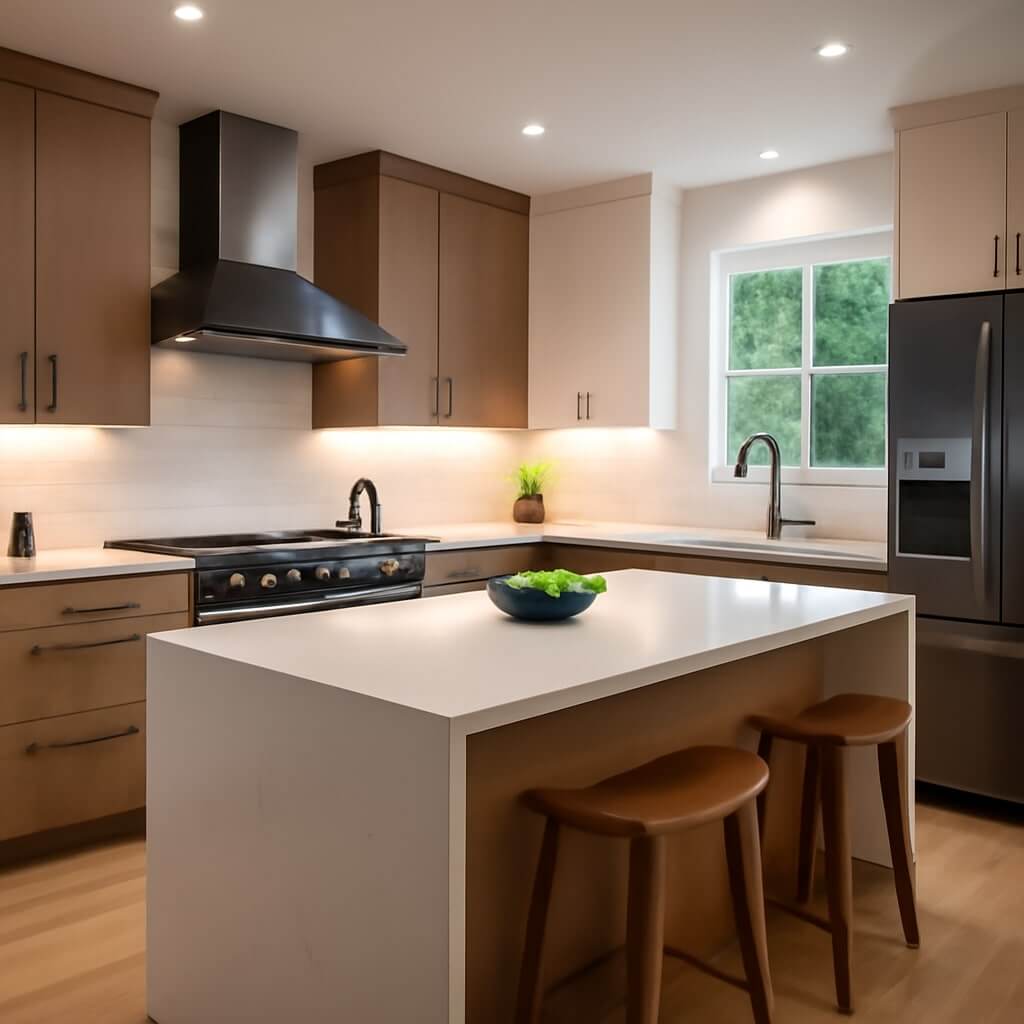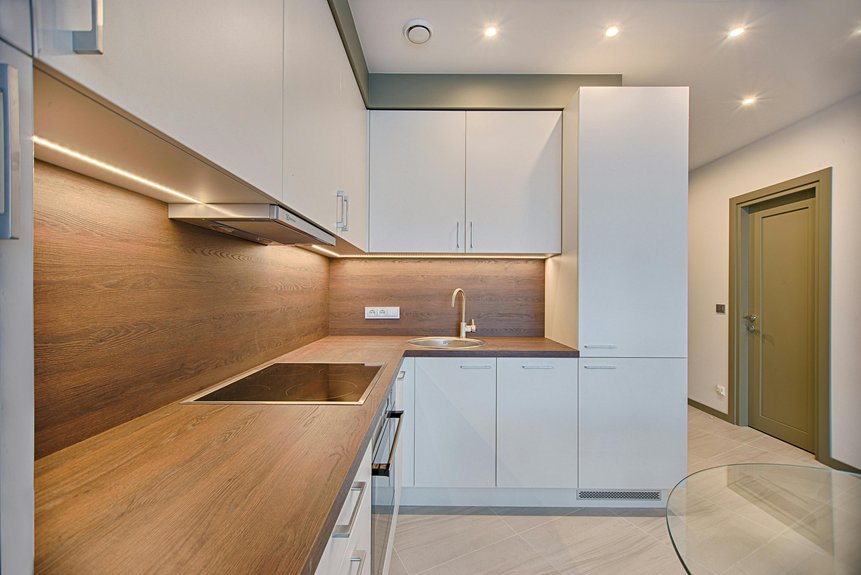If you’re looking to elevate your kitchen remodeling website’s visibility, understanding SEO is essential. With the right strategies in place, you can attract more targeted traffic and convert visitors into customers. By focusing on keyword optimization, enhancing user experience, and leveraging local SEO, you can markedly improve your site’s performance. Curious about the specific steps you can take to achieve these results? Let’s explore how each element contributes to your overall SEO success.
Key Takeaways
- Enhance your website structure for better navigation and user experience, making it easy for visitors to find information.
- Conduct thorough keyword research to identify relevant and long-tail keywords that resonate with your target audience.
- Create compelling meta titles and descriptions with relevant keywords to improve click-through rates and visibility in search results.
- Regularly update and optimize content with engaging visuals and informative guides to keep your audience interested and informed.
- Implement local SEO strategies to attract targeted traffic and reach potential customers in your service area.
Understanding SEO Basics for Kitchen Remodeling Websites
When you’re diving into kitchen remodeling SEO, understanding the fundamentals can greatly impact your online visibility.
SEO fundamentals include optimizing your website structure, enhancing page load speed, and creating quality content. Focusing on keyword significance helps you identify terms your potential clients search for, ensuring your site ranks higher in search results.
Implementing local SEO can also drive targeted traffic to your business. By using relevant keywords naturally throughout your content, you’ll attract the right audience and increase engagement.
Conducting Keyword Research for Targeted Traffic
To attract targeted traffic to your kitchen remodeling website, you need to start by identifying relevant keywords that your potential customers are searching for.
Analyzing competitor strategies can also provide valuable insights into effective keyword usage.
Identifying Relevant Keywords
How can you guarantee your kitchen remodeling website attracts the right audience? Start by identifying relevant keywords through thorough research.
Focus on long tail keywords like “affordable kitchen remodel ideas” to capture targeted traffic and boost your visibility.
Consider seasonal trends—people often search for remodeling tips in spring or fall, so tailor your content accordingly.
Use tools like Google Keyword Planner to find high-volume search terms related to your niche.
Analyzing Competitor Strategies
What strategies are your competitors using to attract traffic to their kitchen remodeling websites?
Conducting a thorough competitor analysis can reveal valuable insights and market trends. Here are some key aspects to contemplate:
- Targeted long-tail keywords
- Engaging blog content and resources
- Social media presence and engagement
- User-friendly website design
- Local SEO optimization strategies
Crafting Compelling Meta Titles and Descriptions
While crafting compelling meta titles and descriptions might seem like a small detail, it plays an essential role in your kitchen remodeling SEO strategy. Effective meta title optimization not only grabs attention but also improves click-through rates.
Use relevant keywords like “kitchen remodeling” and “affordable renovations” to attract your target audience. Keep titles under 60 characters for ideal display in search results.
Your descriptions should be concise, around 150-160 characters, summarizing your offerings compellingly. By aligning these elements with user intent, you create a powerful first impression that drives traffic and boosts your site’s visibility in search engine results.
Optimizing Your Website’s Content for Search Engines
To effectively boost your kitchen remodeling SEO, optimizing your website’s content is essential.
Focus on content freshness and audience engagement to keep visitors coming back. Here are key strategies:
- Use relevant keywords naturally throughout your content.
- Update old blog posts with new information and trends.
- Create engaging visuals, like before-and-after photos.
- Write informative guides and tips tailored to your audience’s needs.
- Encourage user-generated content, such as reviews or project photos.
Enhancing User Experience and Site Navigation
To boost your kitchen remodeling website’s performance, focus on intuitive menu design and a mobile-friendly layout.
Users need to navigate your site effortlessly, which can greatly reduce bounce rates and improve engagement.
Prioritizing these features not only enhances user experience but also aligns with SEO best practices, driving more traffic to your site.
Intuitive Menu Design
An effective menu design is essential for enhancing user experience and site navigation, especially in the competitive field of kitchen remodeling SEO.
You need intuitive layouts that promote user accessibility. Consider implementing these elements:
- Clear categories for services
- Dropdown menus for easy access
- Search functionality for quick results
- Consistent labeling for navigation ease
- Visual cues to highlight important sections
Mobile-Friendly Layout
A mobile-friendly layout is essential for optimizing user experience and site navigation, particularly in the kitchen remodeling industry where potential clients are often on the go. Implementing responsive design and mobile optimization guarantees your website adapts seamlessly to various devices, enhancing engagement.
| Feature | Importance |
|---|---|
| Fast Load Times | Reduces bounce rate |
| Clear CTAs | Increases conversions |
| Easy Navigation | Improves UX |
| Mobile-Friendly Images | Captures attention |
Building Quality Backlinks to Boost Authority
While many factors contribute to your website’s authority, building quality backlinks is essential for enhancing your kitchen remodeling SEO strategy.
Effective outreach strategies can help you connect with industry influencers, while guest blogging allows you to showcase your expertise.
Here are some ways to build these valuable links:
- Collaborate with local home improvement blogs
- Participate in relevant industry forums
- Create shareable infographics on kitchen trends
- Offer expert insights for online publications
- Engage in social media partnerships with influencers
Utilizing Local SEO Strategies for Local Visibility
Building quality backlinks is just one piece of the puzzle when it comes to enhancing your kitchen remodeling SEO.
To boost local visibility, focus on utilizing local citations and geo-targeted keywords. Make sure your business is listed in local directories like Yelp and Google My Business, as these citations can greatly impact your search rankings.
Use geo-targeted keywords throughout your website content, including service areas and city names, to attract local clients.
Monitoring and Analyzing Your SEO Performance
Tracking your SEO performance is essential for understanding how effectively your kitchen remodeling business is reaching potential clients. By leveraging SEO tools and analyzing performance metrics, you can make informed decisions to improve your online visibility.
Consider monitoring:
- Organic traffic growth
- Keyword rankings and trends
- Bounce rates on your website
- Conversion rates from leads to clients
- Backlink quality and quantity
Regularly reviewing these metrics helps you identify strengths and weaknesses in your strategy, allowing you to adapt and maximize your efforts.
Stay proactive and guarantee your kitchen remodeling website thrives in search engine results.
Conclusion
To achieve SEO success for your kitchen remodeling website, focus on implementing these strategies diligently. Prioritize keyword research, optimize your content, and enhance user experience to keep visitors engaged. Don’t forget to leverage local SEO to attract nearby clients and build quality backlinks for increased authority. Regularly monitor your performance to adapt and refine your approach. By concentrating on these key areas, you’ll not only boost your online visibility but also drive more targeted traffic to your site.




